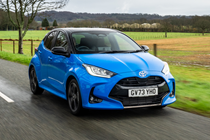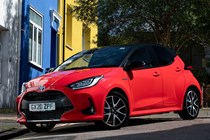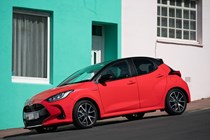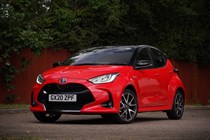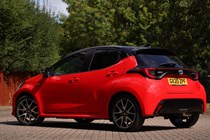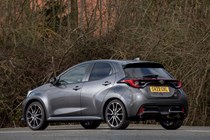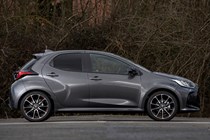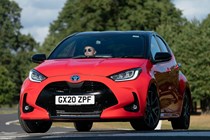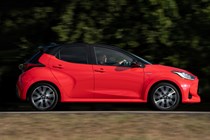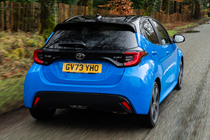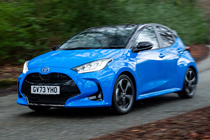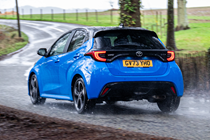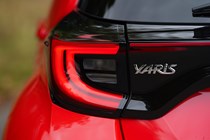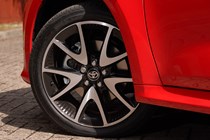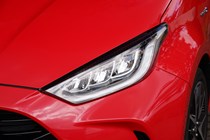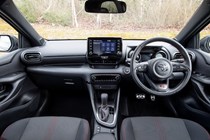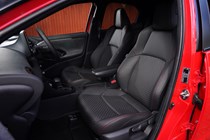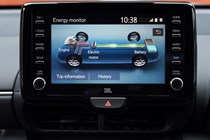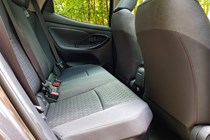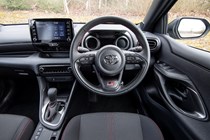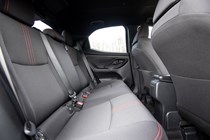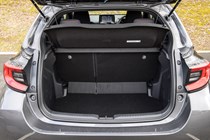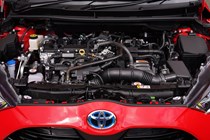
Toyota Yaris engines, drive and performance
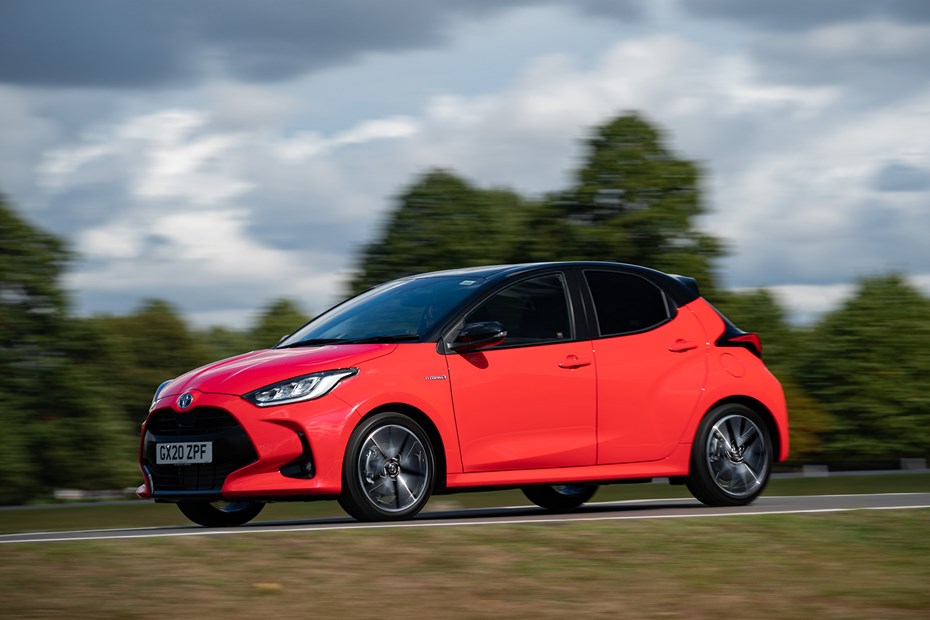
- Hybrid your only choice
- Perfect for town drivers
- Not something for everyone
Hybrid engine
There’s only one engine option with the Yaris. It’s a three-cylinder 1.5-litre petrol power unit, plus an electrical motor, tied up with a CVT-style automatic transmission.
Sounds complex. But it isn’t. It’s a non-plug in full hybrid, which means you don’t need to charge it up from the mains to benefit from electrical assistance. On the flip side, it doesn’t run purely on electric and the battery pack just there to assist the petrol engine in certain situations.
Toyota reckons that the Yaris can operate in pure-EV mode for around 80% in typical urban journeys and can be driven up to 80mph before the petrol engine kicks into life – that’s 55mph higher than the previous version.
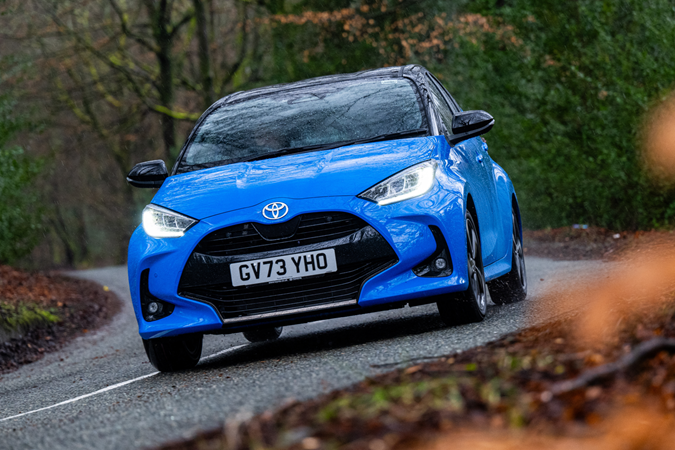
Total output in the lower-spec versions is 115hp, with the 0-62mph time coming in 10.3 seconds. Truth be told, it feels a bit quicker than that time would suggest. Off the line, thanks to the electrical propulsion, it’s genuinely energetic. There are no traditional-style gears to go through, so 0-30mph is entertaining. It’s perfect for busy towns and cities.
In our extended six-month test, driver Gareth Evans reported, ‘The hybrid system in this iteration is so impressively developed. It’s really smooth and almost silent when in electric mode, but the biggest surprise for me was the 1.5-litre petrol engine’s peppy performance. It feels like it’s got a lot more oomph than its 115hp would suggest, and it sounds distinctive too because it only has three cylinders. Just like my last motorbike.’
For 2024, Toyota has introduced two new trim levels, Premiere and GR Sport, that also come with a new, enhanced power unit. They’re still powered by a 1.5-litre hybrid, but Toyota has fettled with the electric element of the engine so it now produces 129hp. Can you tell a difference on the road? Not really, but the enhanced engine still works well in tandem with the CVT transmission and a little extra poke is always welcome.
As for the CVT, it’s a type of automatic gearbox often associated with loud and inconsistent engine noises, but this is one of the best versions around. The engine is remarkably quiet, which goes some way in explaining why acceleration is not tortuous on your eardrums. In fact, you really need to be pushing hard to notice that it’s a CVT.
What’s it like to drive?
- Confidence inspiring grip
- Harsh ride on big wheels
- Safe, could handle more power
On the larger 17-inch wheels it’s too firm. At motorway speeds the ride is more than fine, smoothing the road out as it pootles along. But at town speeds it makes the car seem like it’s constantly driving over a rough surface. The GR Sport spec cars go one further with 18-inch wheels which only exacerbate the jittery ride issues – a trim to truly avoid if you value ride comfort.
The majority of cars sold in the UK have 16-inch wheels. These cars get more compliant springs and dampers, plus higher profile tyres, and in combination this delivers a smoother ride. The upside is that the Yaris really clings on round the corners. Dial in a bit more lock on a tight roundabout and there is heaps of grip with a safe overall feel. But don’t imagine it can’t be fun – it is.
Gareth added, ‘But it’s not at all straight-laced either. The underlying chassis is genuinely great fun to drive, despite a point-and-shoot automatic transmission. The 1.5-litre engine with 116hp is just right for the size of vehicle, and even sounds pretty peppy.’
The engine is pretty hushed, even when working hard, and there’s little vibration coming through into the cabin, making for a relaxed place to spend time. The petrol engine itself makes a nice thrummy sound and no longer sounds strained when worked hard even with this style of automatic transmission.
Other than that, you get a whining from the electric motor under accelerating and during braking at low speeds. Things get a little louder when the regenerative braking system generates a whirring noise that’s noticeably annoying once you’ve tuned into it. Still, the JBL sound system (available on top-spec cars) does a good job of drowning it out.
There are three drive modes to choose from – EV, Power, and Eco. EV tries to use the battery pack as much as possible. Power mode combines both sources and makes the steering feel just a touch heavier to give it a hint of sportiness. Eco dulls everything and coasts as much as possible, maximising fuel economy.


